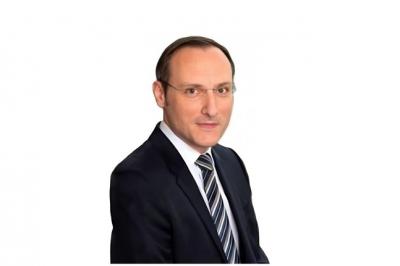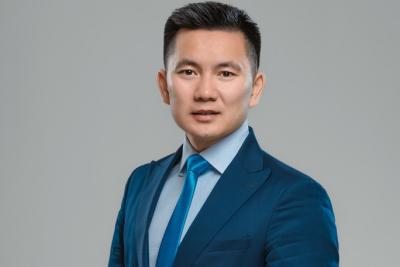The Growing Role for Sub-advised Funds in the Global Fund Industry – A View from Allfunds

Dr Angelina Pramova of Allfunds
Nov 7, 2022
Dr Angelina Pramova is the Global Head of Business Development Investment Solutions at the well-known fund platform, Allfunds. She gave a fascinating presentation at the Hubbis Investment Solutions Forum in Singapore on September 14, highlighting the growing role for sub-advised funds in the global wealth management industry, a trend that is developing in Europe and that she said it has potential to catch-on in Asia. This is a brief summary of some of her key points.
Dr Angelina told delegates that her mission was to highlight a key trend towards the implementation of sub-advisory in the wealth management space that she expects to become ever more prominent in Asia.
A key driver, she reported, is the estimated USD30 trillion that is transitioning from the Baby Boomers to the millennials over the next couple of decades. She said the millennials will be much pickier compared to their parents and grandparents when it comes to working together with wealth managers and private banks, they will want a broader choice of products and to be more exposed to thematic investments and will demand a greater say in the structures that they choose to invest in.
The result, she said, will have major implications for how the private banks and wealth managers protect their profitability and at the same time strengthen relationships with investors. “One way that we see forward for the wealth industry is a far greater use of sub-advised funds,” she stated.
She explained that sub-advised funds are mandates managed by external asset managers and very often in a white-labelled fund vehicle. She said they are usually used by banks when they wish to close a gap in their product offering by blending not only their in-house capabilities but adding also the expertise of chosen external and affiliated asset managers to do their strategy selection.
“They usually do that with a very careful strategic consideration of mostly niche strategies that they want to partner with, or to partner all the way to external asset managers,” she reported. “They often use these instruments to create additional value for their clients and to have a differentiator versus their competitors.”
And she added that leveraging the skills of external unaffiliated managers, the bank's aim is to co-brand those products by using their real name on the product and making use of the specific expertise and long track record of their partner so that they can provide the best of both worlds to their clients. She said these funds can also be used in fund of funds, and also in the discretionary portfolio management mandates.
She said the key drivers are threefold. First, there is the ongoing quest for alpha causing banks to reach out for solutions beyond the range of products on offer in-house. The second driver is the quest to maintain or even enhance margins. And the third driver is the transition of wealth to the millennials, and changing investor demand, for example for more ESG products, impact investing, and so forth.
She explained that the investors should benefit, as they obtain a broader and more direct access to an open architecture offering of different strategies, but from their banks or wealth managers and at a competitive price. The second beneficiary group are the asset managers, who gain additional traction and distribution and visibility. And of course, the distributors – the banks and wealth managers – who can boost share and create value for their clients. “It is a win-win-win situation,” Dr Angelina declared.
She then reported that the sub-advisory market is in full expansion and is the fastest-growing open architecture segment in Europe and the US. The AUM of sub-advised funds sold in EMEA continued to grow meteorically by reaching more than EUR2 trillion in 2022, she reported. EMEA sub-advised fund assets are expected to rise to almost EUR3 trillion in the next ten years, she said, citing data from instiHub.
And she said the trend towards sub-advised funds being used inside distributors’ fund of funds is increasing with up to 56 per cent of their sub-advised assets gathered from inclusion into the distributors’ fund-of-funds. “Converting that to the USD30 trillion of wealth shift I mentioned earlier, we can see that it will be 10% of that global volume, which is really rather significant,” she stated.
Dr Angelina then offered delegates two case studies, the first of which referred to the creation of a white labelled fund range of sub-advised funds under the UCITS regime.
“The rationale behind this decision by one of our clients was to broaden their own product range by offering a blend of their own strategies with external chosen products and to make that blend under the UCITS regime,” she reported. “The objective was to benefit from the regulatory comfort, transparency and global recognition of the UCITS products.”
She drilled down into considerable detail on the structure, concluding that there are two key positive outcomes for the client and their clients. First, the selection of the unaffiliated managers was made to ensure no overlap with the in-house capacities and also to make sure that the selected strategies are compelling and attractive to the investors. The second is the choice of the preferred partner for the implementation of the UCITS range.
“This form of outsourcing makes it possible to incorporate expertise in new asset classes, as well as extend geographical coverage,” she concluded.
Her second case study centred on a fund of funds. She again offered considerable detail, summarising the rationale as the improvement of the cost efficiency of the client’s fund of funds by using external building blocks to free capacity on the margin side and to share that free margin with the investors, thereby strengthening the relationship with them by offering them economic advantages in the form of lower fees.
She concluded by summarising the findings of her case studies in four observations. “First, we believe that sub-advisory is here to stay and will continue shaping the product offering of the wealth management industry across the globe. Second, asset managers are making the conscious decision to participate in this trend. Third, sub-advisory can be a very powerful instrument to create value and differentiate your offering versus competitors. And last but not least, sub-advisory is authorised globally, and we believe it will be also meaningful trend in Asia.”

Global Head of Business Development Investment Solutions at Allfunds

More from Dr Angelina Pramova, Allfunds
Latest Articles






